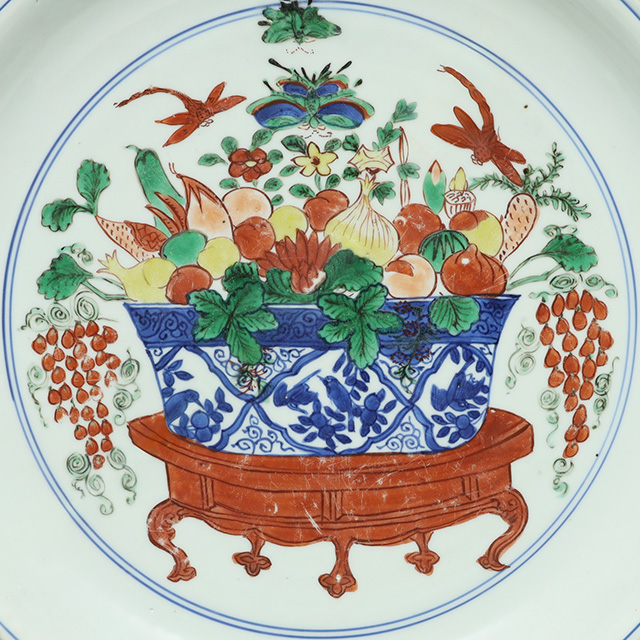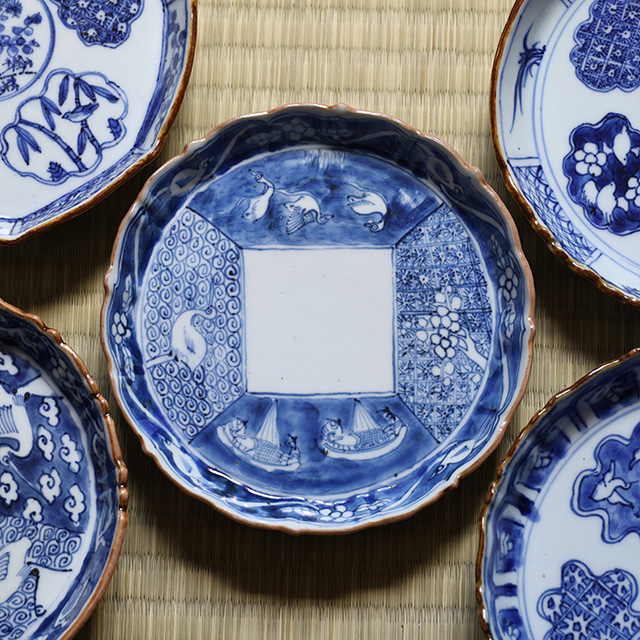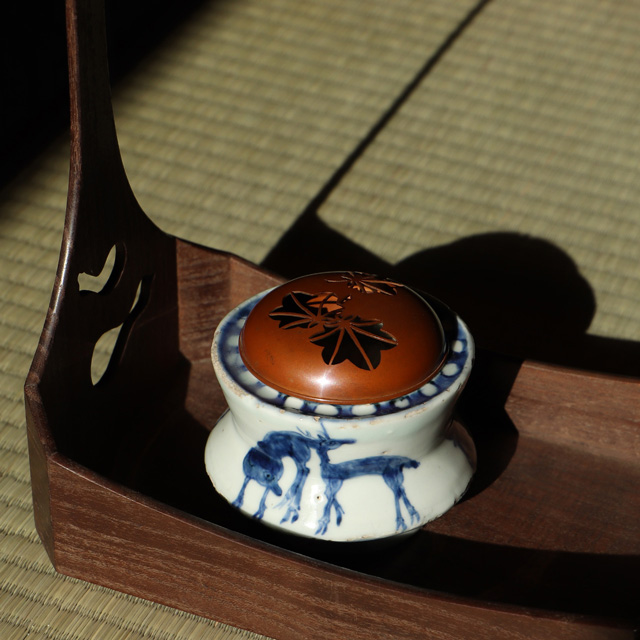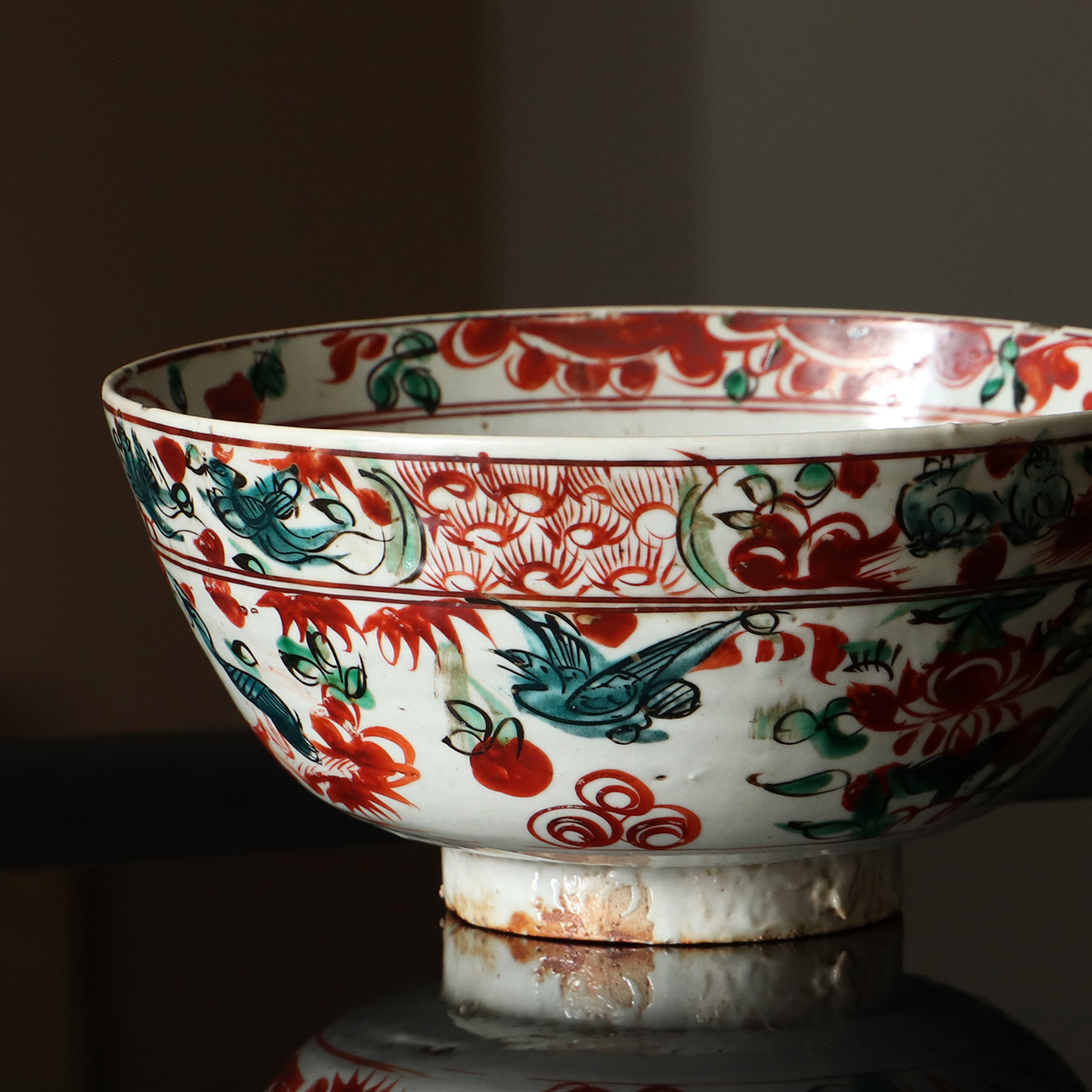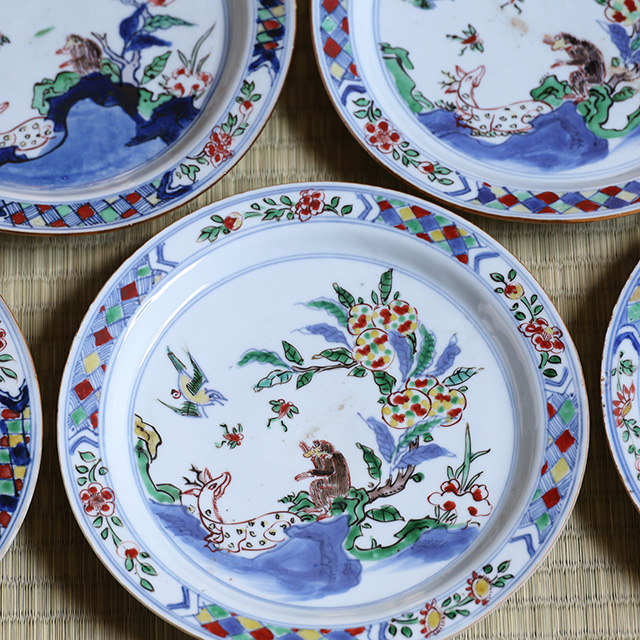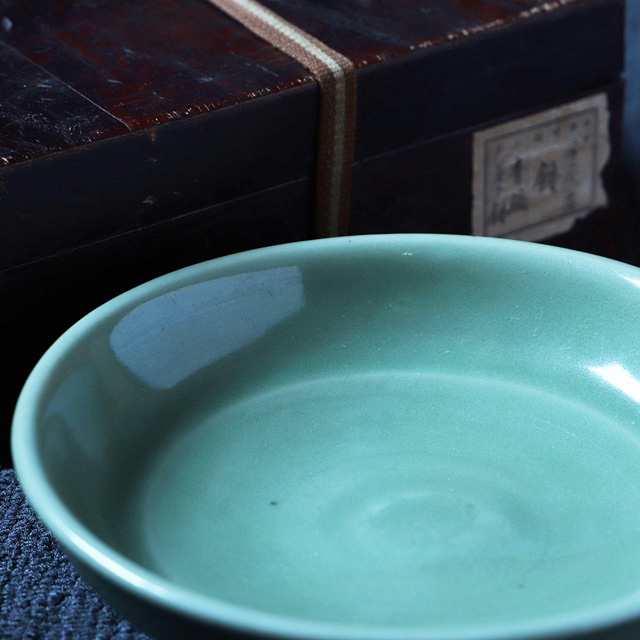Chinese Antique(Ming・Qing Dynasty)
中国古美術(明・清時代)


Chinese Antique(Ming・Qing Dynasty)
https://tenpyodo.com/en/product1/cat/china/(Handled Items ⇒ Chinese Antique)
Tenryu-ji Celadon
Tenryu-ji celadon is celadon that was fired in the longquan kiln between the end yuan dynasty and the early ming dynasty. The name comes from the fact that a large amount of this kind of celadon was shipped on the trade ship “Tenryu-ji Ship” under the guise of building tenryu-ji during the period of the northern and southern courts. There is also a theory that the name comes from the ukibotande incense burner that Muso Soseki brought to tenryu-ji temple. The celadon produced by longquan kiln also grew in size during the yuan dynasty, and is characterized by a thick devitrifying greenish glaze. Kinuta celadon was based on a plain design, but tenryu-ji celadon was mass produced in response to the general trend of demanding decoration. “Tobi Celadon”, in which iron spots are scattered on the glaze surface, is also a decoration method that characterizes tenryu-ji celadon.
Shichikan Celadon
Shichikan-celadon is celadon that was fired in the longquan-kiln mainly during the late ming dynasty. It is known that the origin of the name is said to have been brought to japan by an official of the seventh rank(seven officials of the ming dynasty). It has a transparent celadon color with a strong luster like vidro, and while kinuta-celadon and tenryu-ji-celadon do not have many crazes, many works of shichikan-celadon that have rough crazes are noticeable. While there are large works of tenryu-ji-celadon, there are more small works of shichikan-celadon. The main works are vase, incense burner, incense container, stationery, and the vase and famous incense container used in the tea ceremony is particularly highly valued.
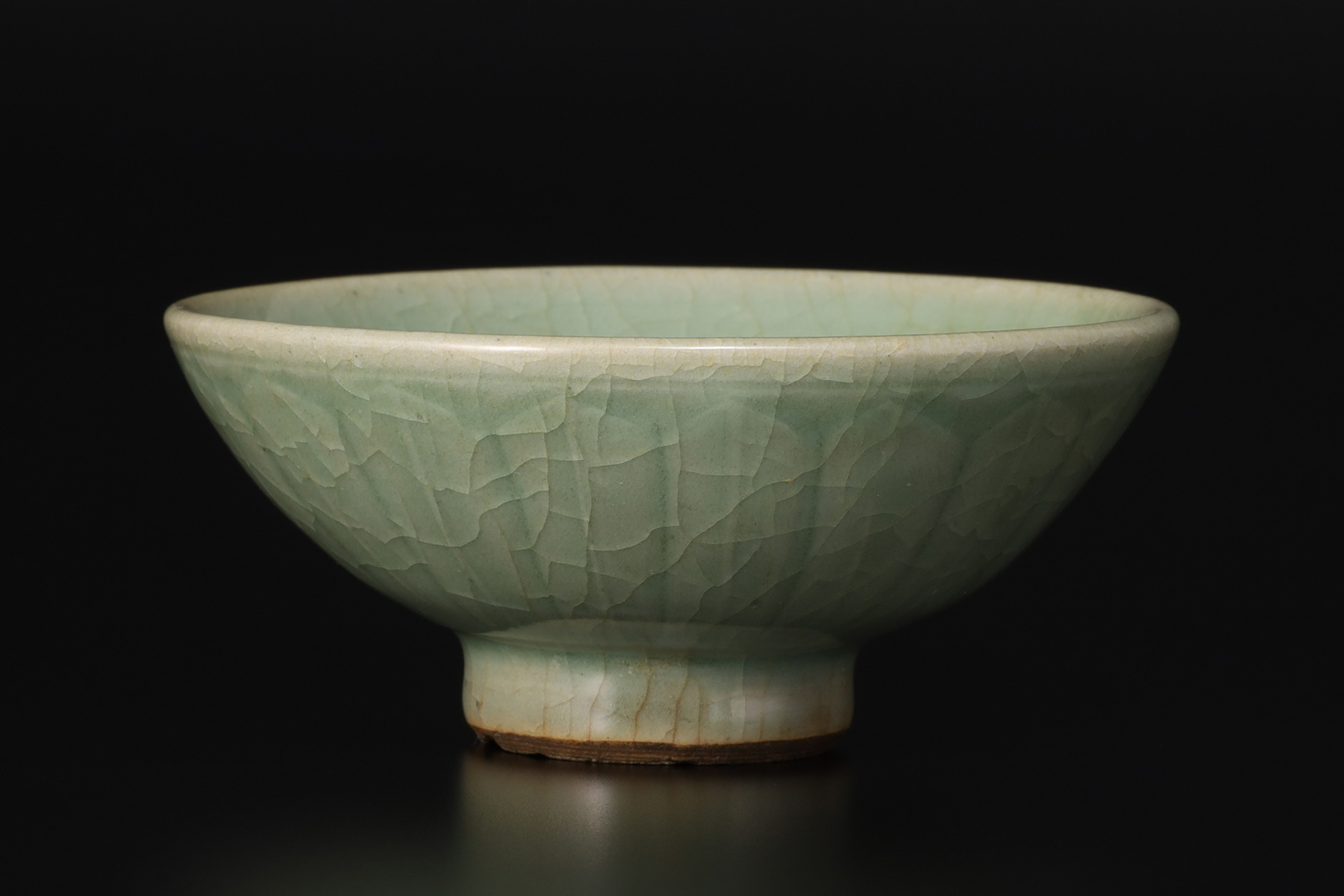
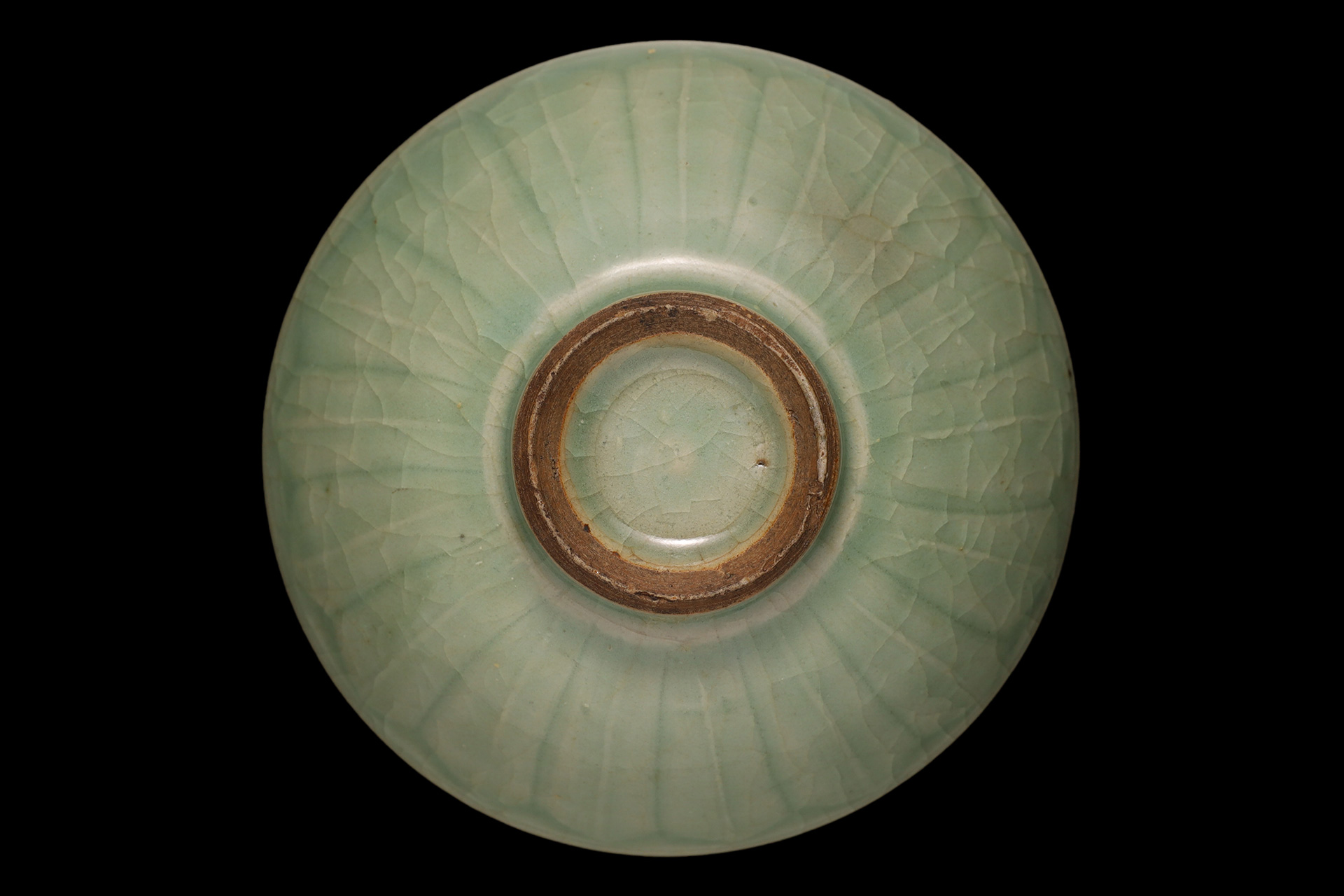
万暦赤絵
万暦赤絵とは明時代後期の万暦年間(1573~1620)に景徳鎮官窯で焼成された五彩です。
嘉靖年間(1522~66)から万暦年間は五彩の全盛期であり、
華やかさを求めた作風は荘厳美麗を極めるかのように各々の色彩が共鳴し、
龍鳳、花鳥、魚藻、人物故事、八宝、吉祥、花籠文等が器面を覆い尽くしています。
嘉靖年間や隆慶年間(1567~72)で同様の特徴を持つ五彩も「万暦赤絵」と総括されてきました。
その濃艶な赤絵は高く評価され、
伊万里焼の上絵付けに大きな影響を及ぼした他、
茶の湯を嗜む政財界人も茶器や水指を好んで所有しました。
志賀直哉は小説『万暦赤絵』を書き、
梅原龍三郎は「万暦赤絵」の花瓶をモチーフとして繰り返し描いた事で知られます。
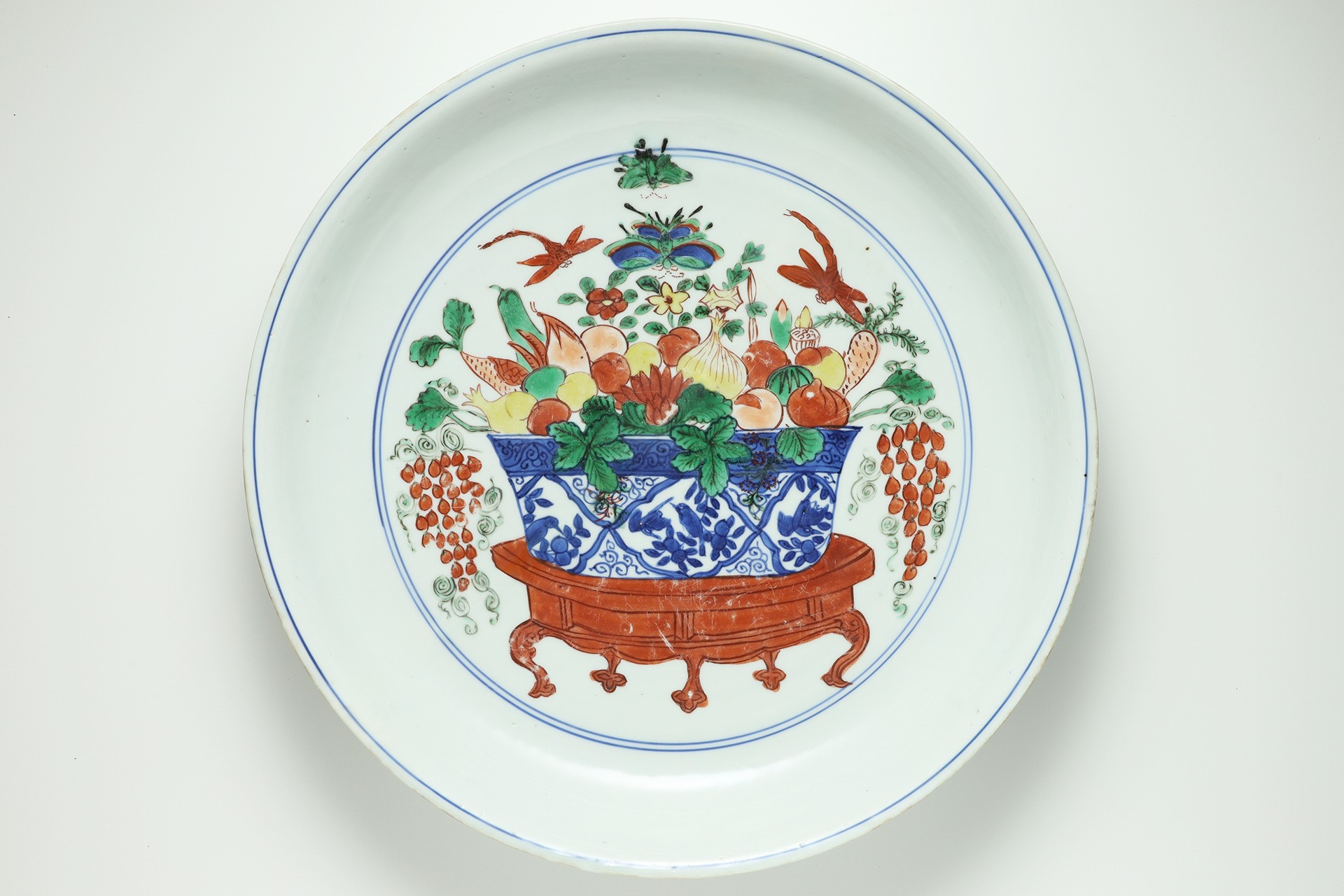
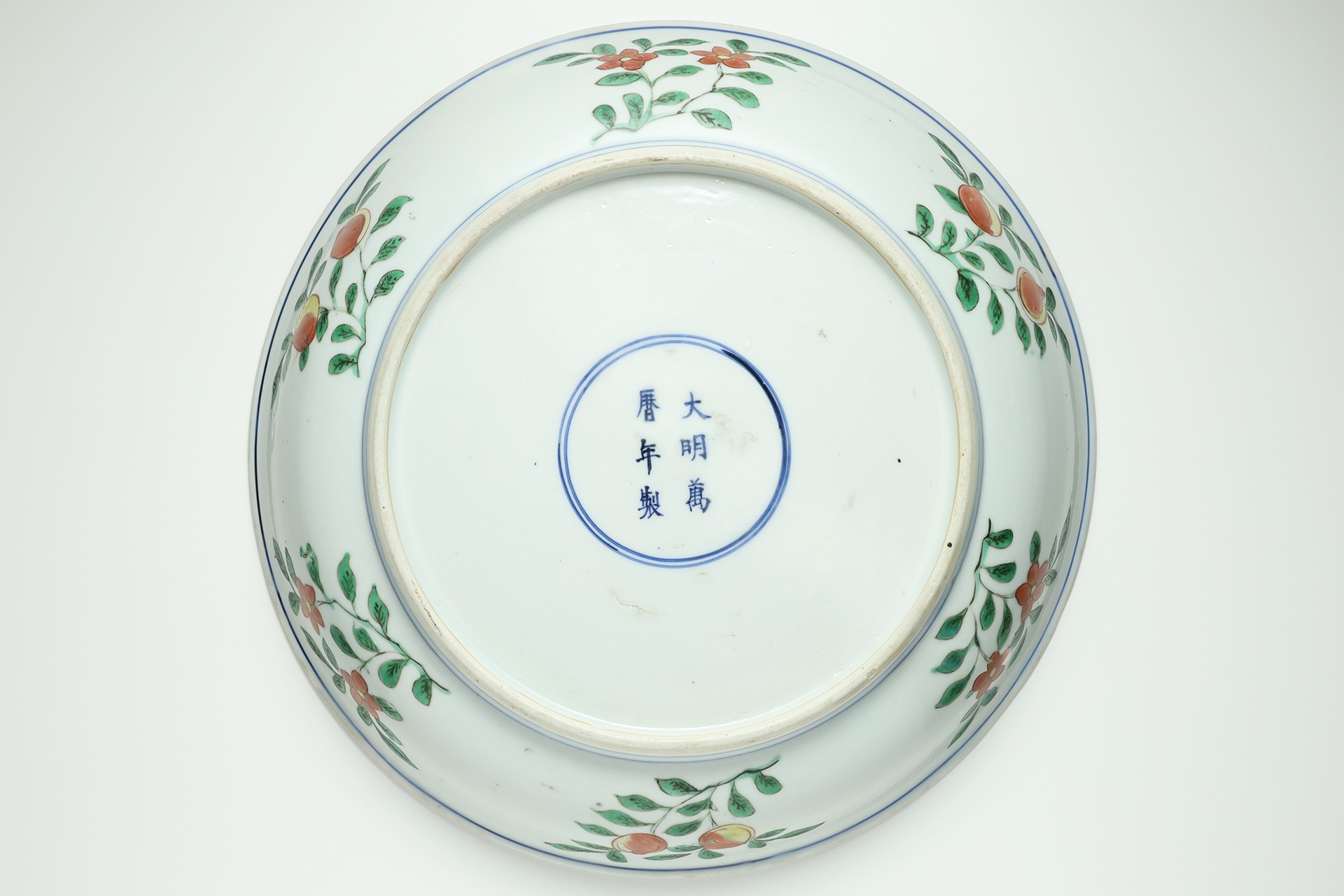
Kosometsuke
Kosometsuke refers to the blue and white(sometsuke)porcelain that were fired at the Jingdezhen kiln in china, mainly during the late ming dynasty’s tianqi era(1621-27). These works were made especially for japan and many of them remain in the country. In contrast to the qing dynasty’s blue and white porcelains, known as shin-watari(new-watari), a unique group belonging to the old style ko-watari(old-watari) blue and white porcelains are now independently referred to as “Kosometsuke”. These porcelains can be broadly divided into tea utensils ordered by master of tea ceremony and everyday items.The kosometsuke of tea utensils, which were popular among the japanese, have a thick and heavy overall appearance, possibly due to the use of a thick clay base. At the end of the ming dynasty, there was a trend among japanese master of tea ceremony to order and fire unique tea utensils, with each master of tea ceremony ordering their preferred tools. Many kosometsuke works have glaze peeling off due to differences in the shrinkage rates of the clay and glaze, exposing the inner clay. This phenomenon, which resembles the appearance of being eaten by worms, is called “Mushikui(worm eaten)”. One characteristic is that mushikui(some holes)can often be found in areas where the glaze is thinly applied, such as the rim or angular parts. While this might be considered a flaw in ordinary porcelains, master of tea ceremony found elegance in this natural phenomenon and appreciated the rough taste, valuing it as an aesthetic effect.
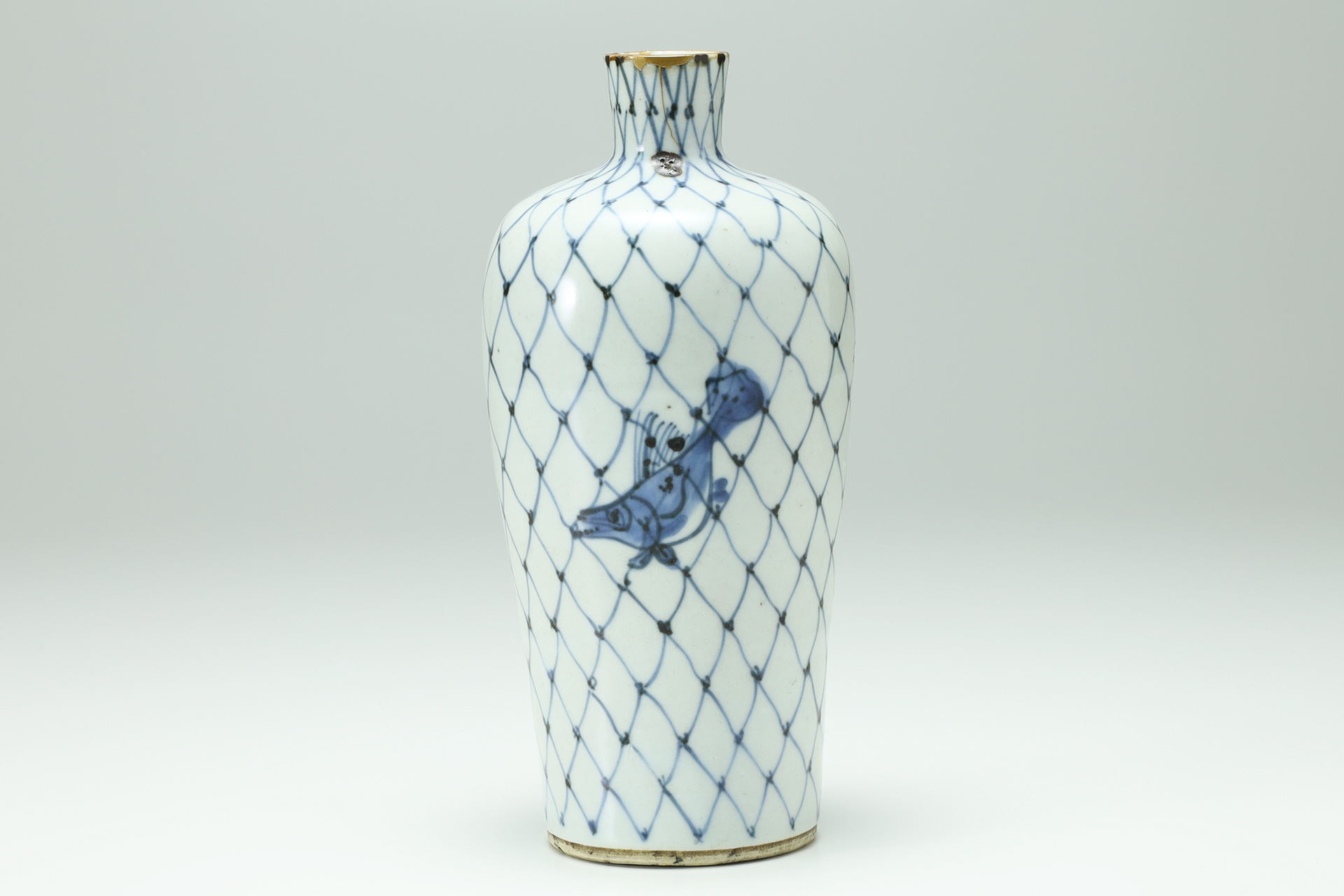
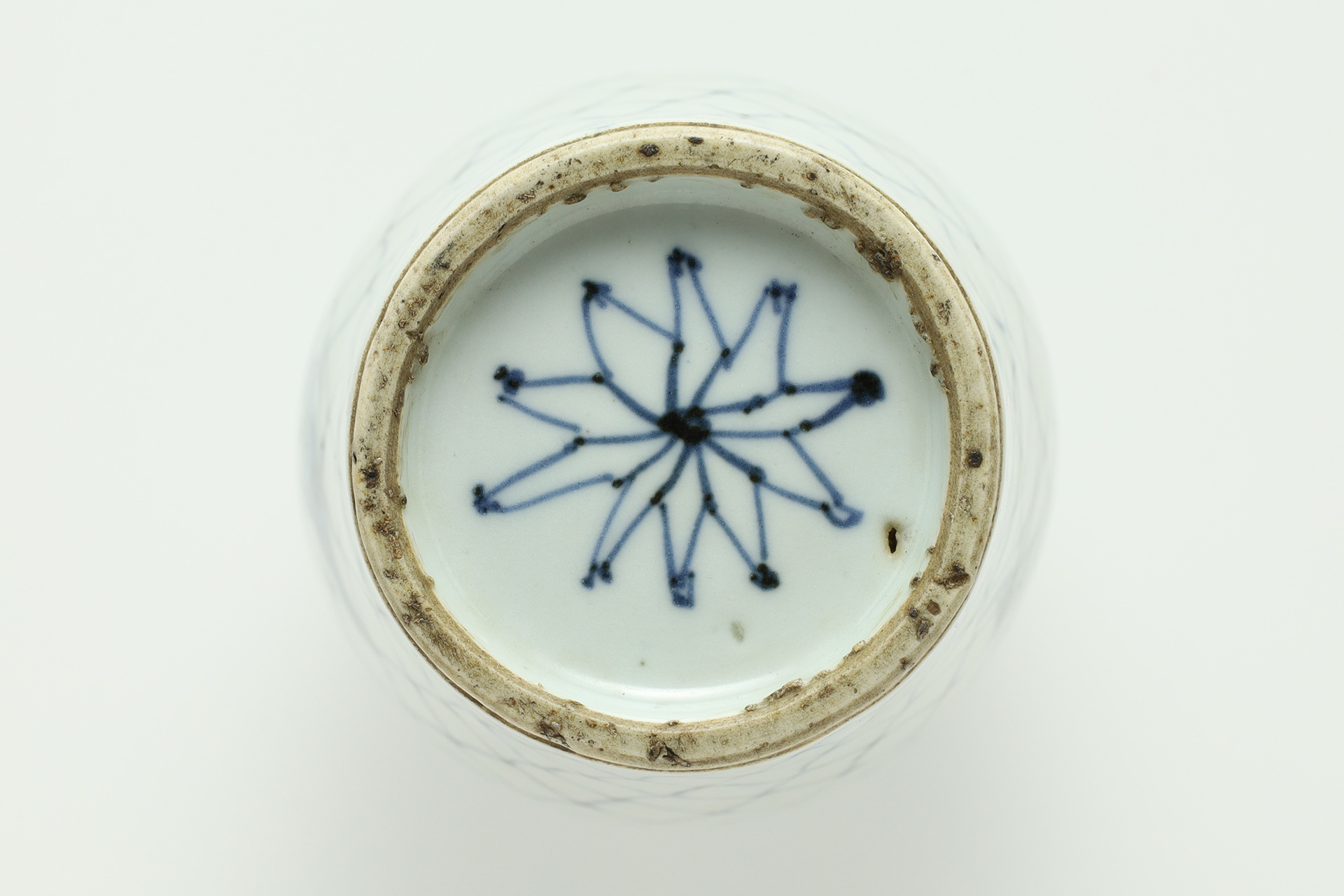
Tenkei-Akae
Tenkei-akae refers to the overglaze enamels porcelain that were fired at the jingdezhen kiln in china, mainly during the late ming dynasty’s tianqi era(1621-27). Colors such as red, green, yellow, and black are added to match the blue and white of the base, and the work is characterized by a free spirited style that is stylish and tasteful. During this era, with the fall of the Wanli Emperor, the jingdezhen imperial kiln was closed down, and the civilian kiln took the lead in production and sales. Potters who worked at the jingdezhen imperial kiln moved to the civilian kiln to make a living, leaving behind masterpieces that are reminiscent of the jingdezhen imperial kiln. Most of them belong to the tenkei-akae, kosometsuke, and shonzui. Many tenkei-akae works have glaze peeling off due to differences in the shrinkage rates of the clay and glaze, exposing the inner clay. This phenomenon, which resembles the appearance of being eaten by worms, is called “Mushikui(worm eaten)”. One characteristic is that mushikui(some holes)can often be found in areas where the glaze is thinly applied, such as the rim or angular parts. While this might be considered a flaw in ordinary porcelains, master of tea ceremony found elegance in this natural phenomenon and appreciated the rough taste, valuing it as an aesthetic effect.
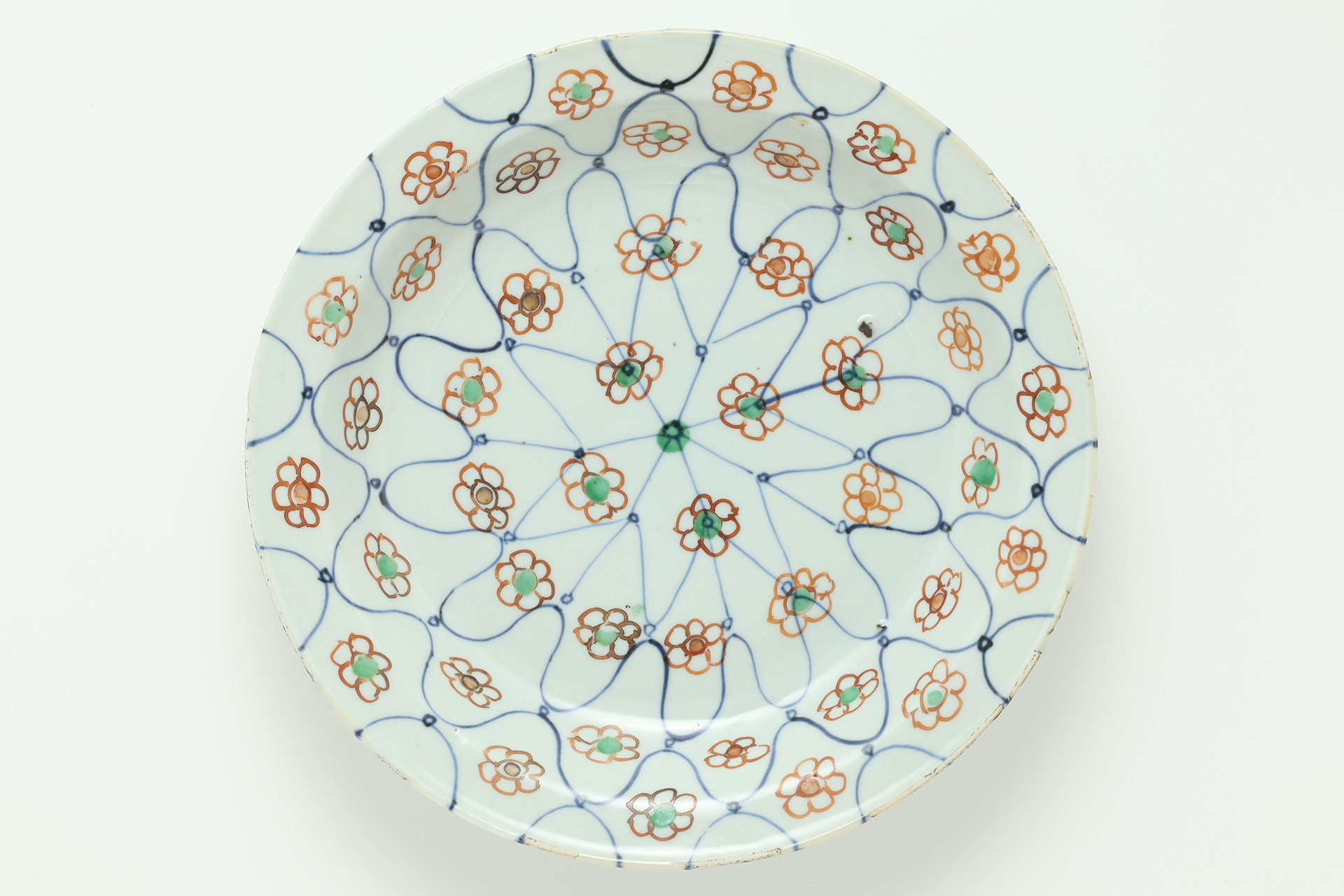
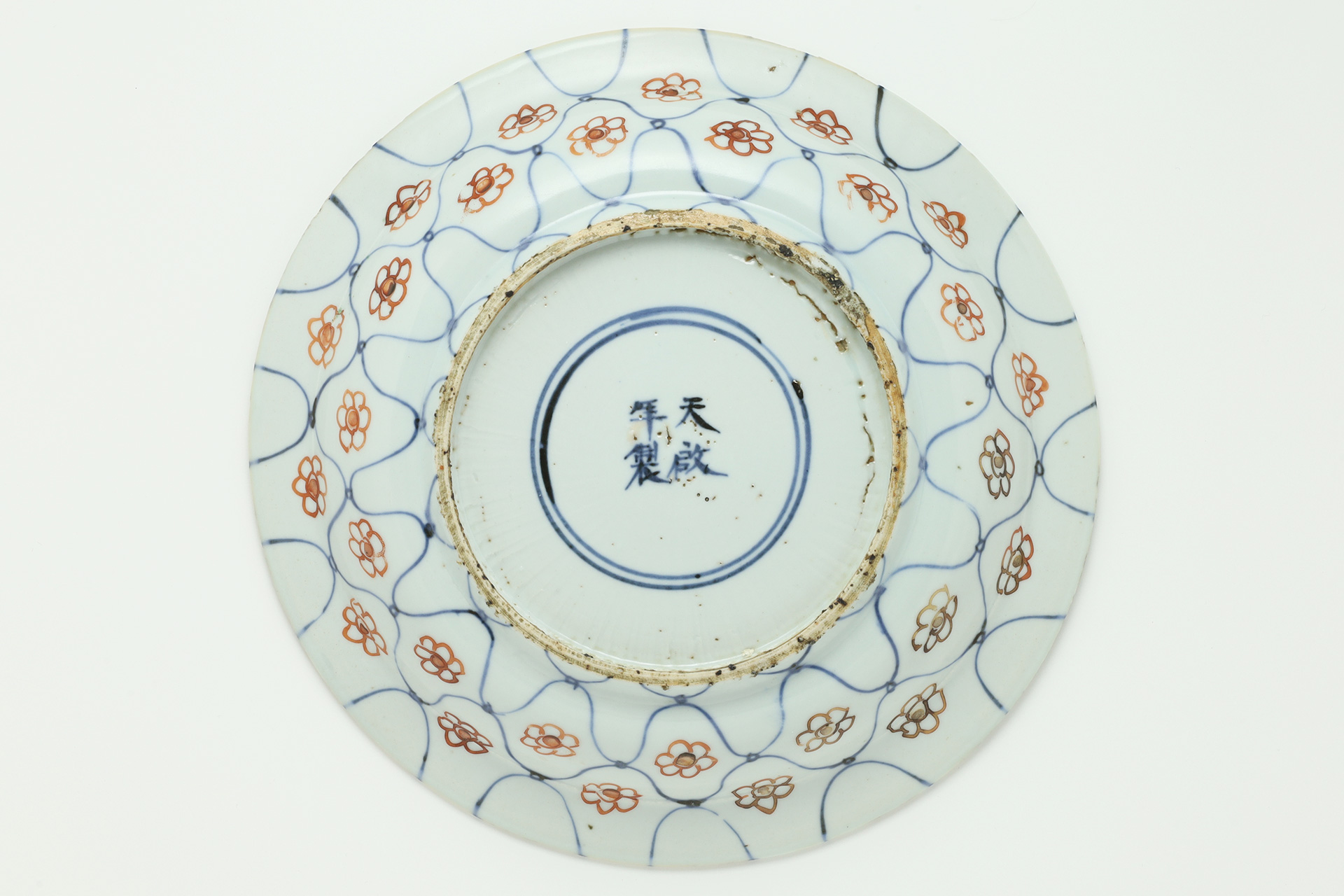
Shonzui
Shonzui refers to the top quality porcelain that were fired at the jingdezhen-kiln in china, during the late ming dynasty’s chongzhen era(1628-44). The name comes from the fact that there is a blue-and-white(sometsuke) inscription on part of the vessel that reads “Gorodayu Goshonzui-Made” which is interpreted as meaning “Made by the eldest son of the fifth son of the Go-family”. There is a theory that Kobori Enshu was involved, and the buyers included tea masters, samurai, temples, and wealthy merchants. It is made from high quality white-porcelain and is thick and heavy when you hold it. It is characterized by deep blue-and-white and crystal clear transparent glaze, and the focus is on filling every corner of the surface of the vessel with auspicious and geometric designs. Some of the vessel shapes are modeled on momoyama tea pottery, and known works include tea utensils such as water container, tea bowl, chaire, incense container, tea towel container, and shaking container(furidashi), as well as luxury tableware such as sake bottle, bowl, mukozuke, dish, and sake cup. Adding shonzui to a formal tea gathering arrangement creates a sense of cleanliness and harmonizes with the pottery and colored pottery.
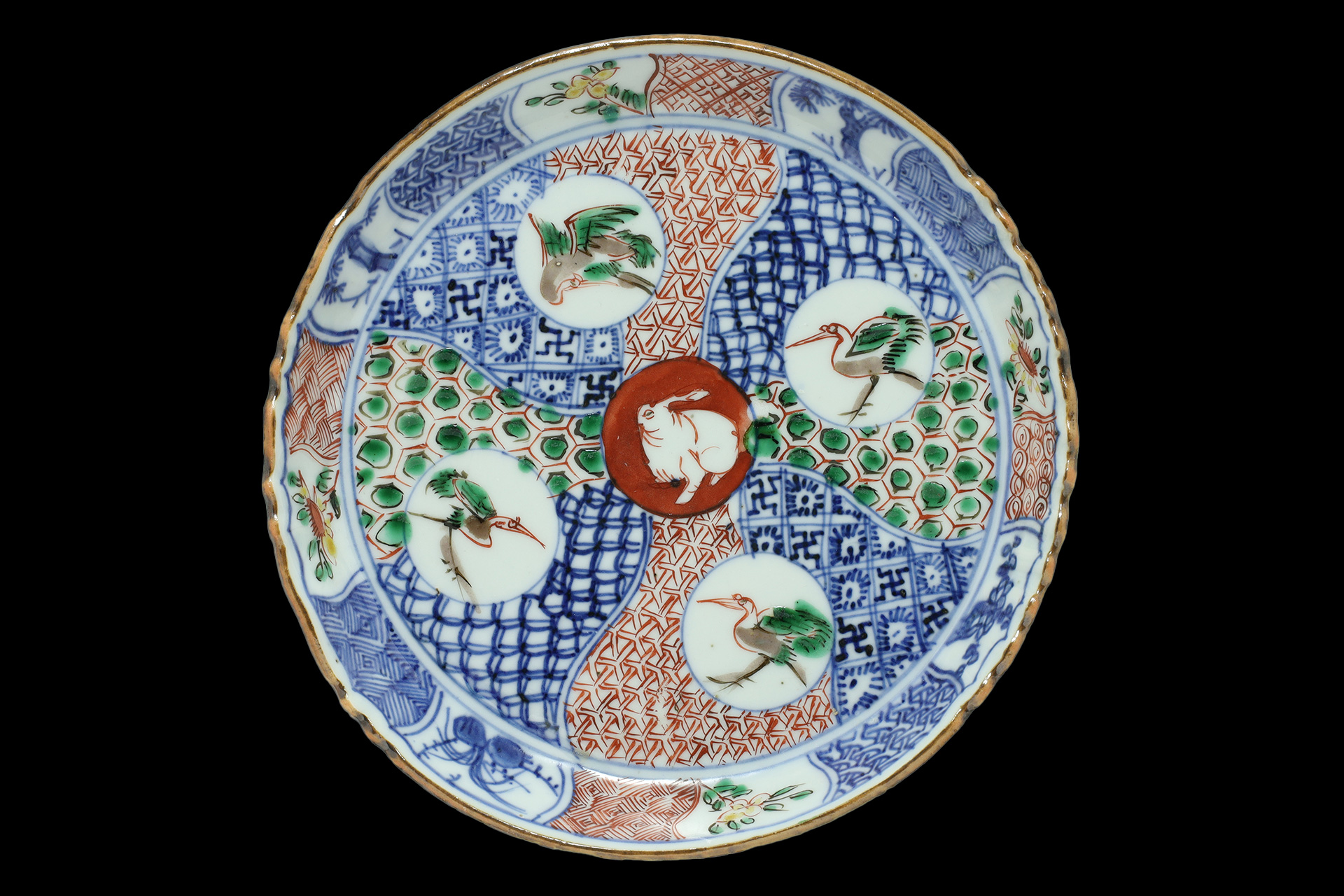
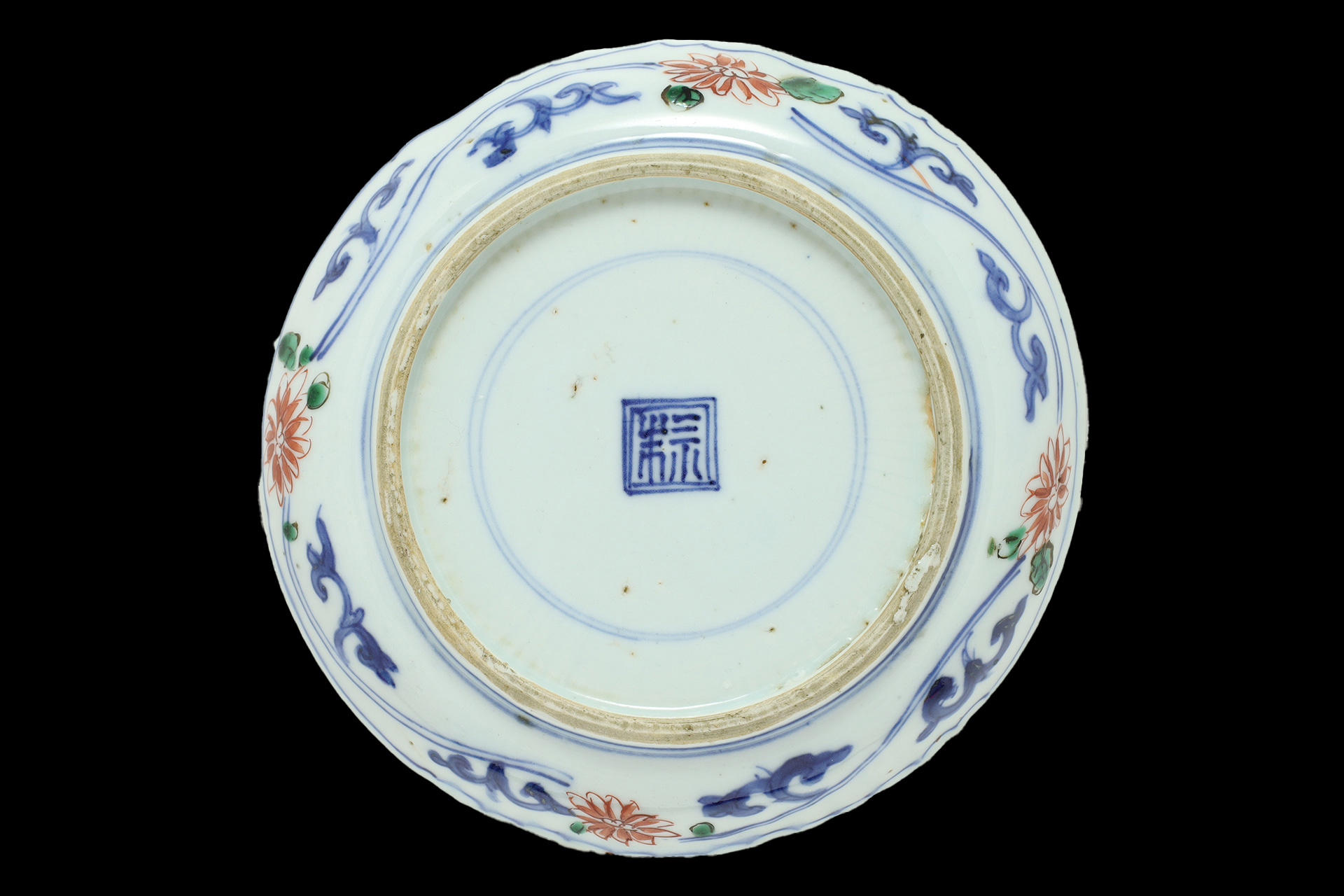
Nankin-Akae
Nankin-Akae refers to the five-colors porcelain that were fired at the Jingdezhen-kiln in china, during the late ming dynasty to the early qing dynasty. In the narrow sense, it tends to be distinguished from tenkei-akae and iroe-shonzui. The name comes from the fact that the capital of the ming dynasty was in nanjing, and refers to the five-colors porcelain that was brought over from china. Many pieces are coated with a transparent milky-white-glaze and are composed of only overglaze-enamels, and blue-and-white(sometsuke) is rarely used. Products for europe consist mainly of large works such as jar, dish, water pitcher, vase, bottle, and lid bowl, while products for japan consist of tableware and tea ceremony utensils.
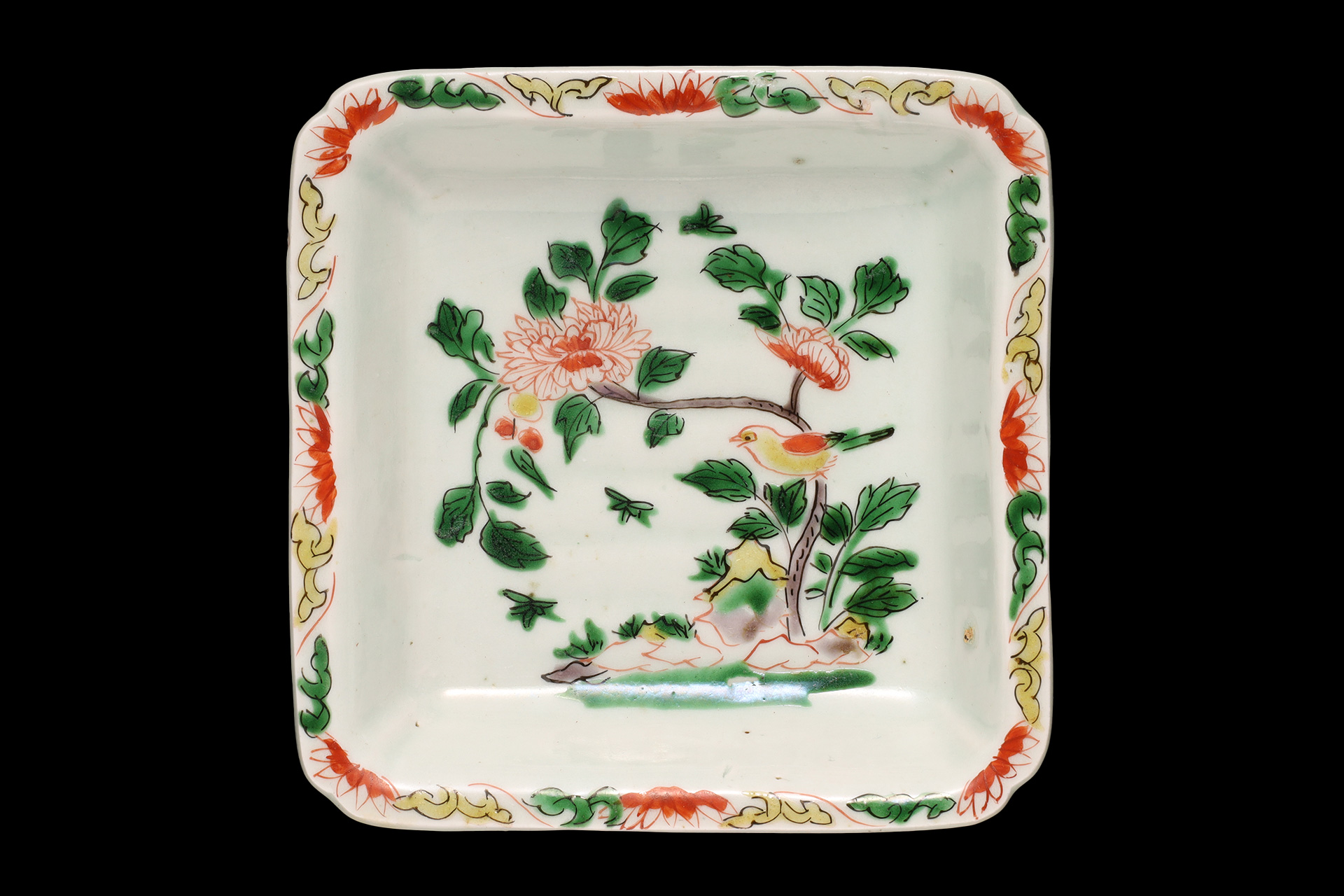
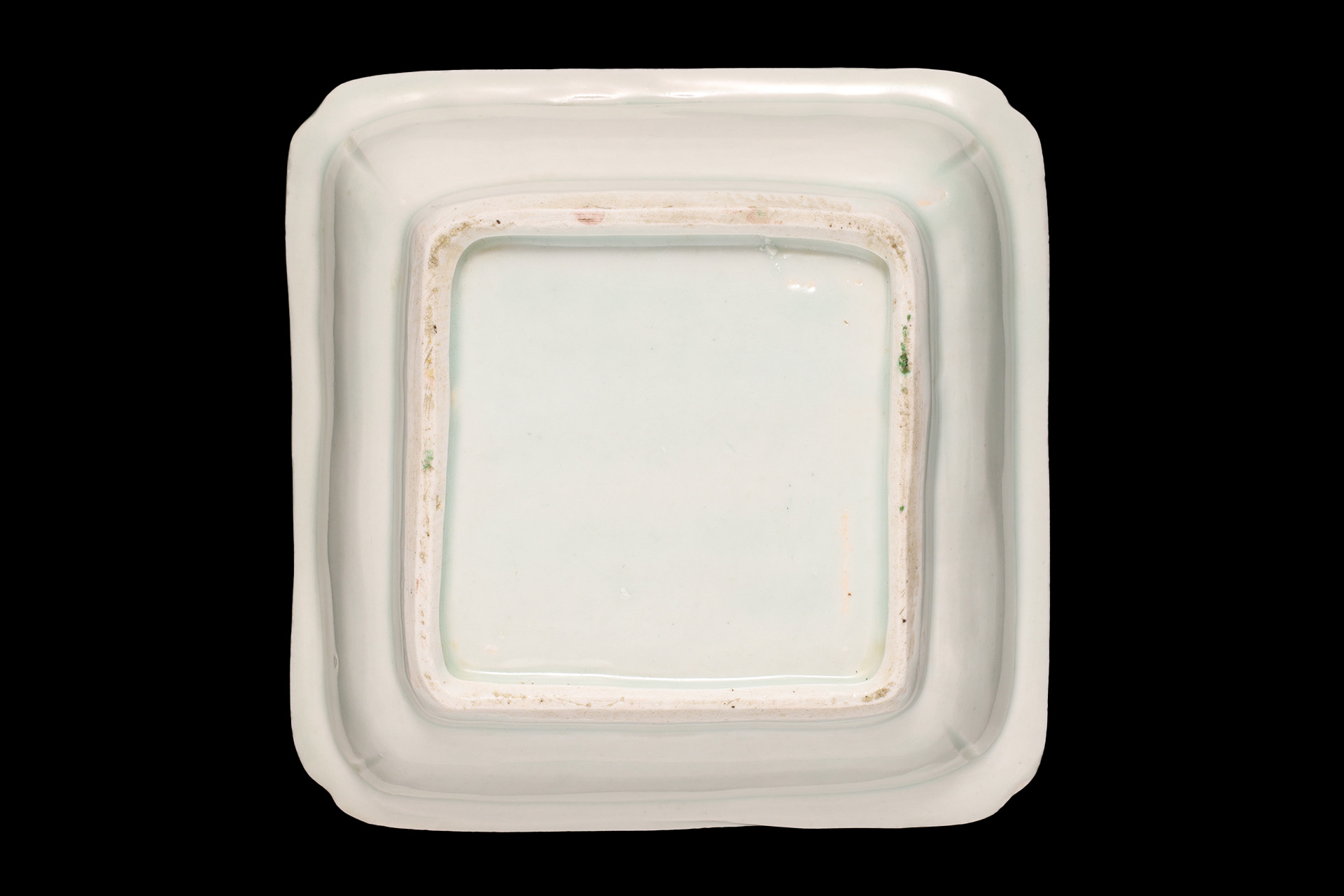
Gosu-Akae
Gosu-akae refers to the overglaze enamels porcelain that were fired at the zhangzhou kiln in china, mainly during the late ming dynasty. The style is said to have been developed from the ko-akae and kinrande of the jingdezhen kiln. Basically, blue and white is not used, and a thick milky white devitrified glaze is applied inside and outside. The overglaze is based on red, with green and blue added, and the relaxed depiction gives a sense of style. On rare occasions, the red bead design is overlaid with gold leaf. One of the characteristics of the pottery is that it has sand attached to the bottom because it was fired with sand laid down on it. There are also examples of compositions depicting japanese characters for “Tenkaichi” and arabic characters, indicating that the main commercial areas were southeast asia and japan. Among them, gosu-akae is preferred and prized in japan, and japanese tea master especially value the tamatori-jishi bowl and sakigakede bowl.
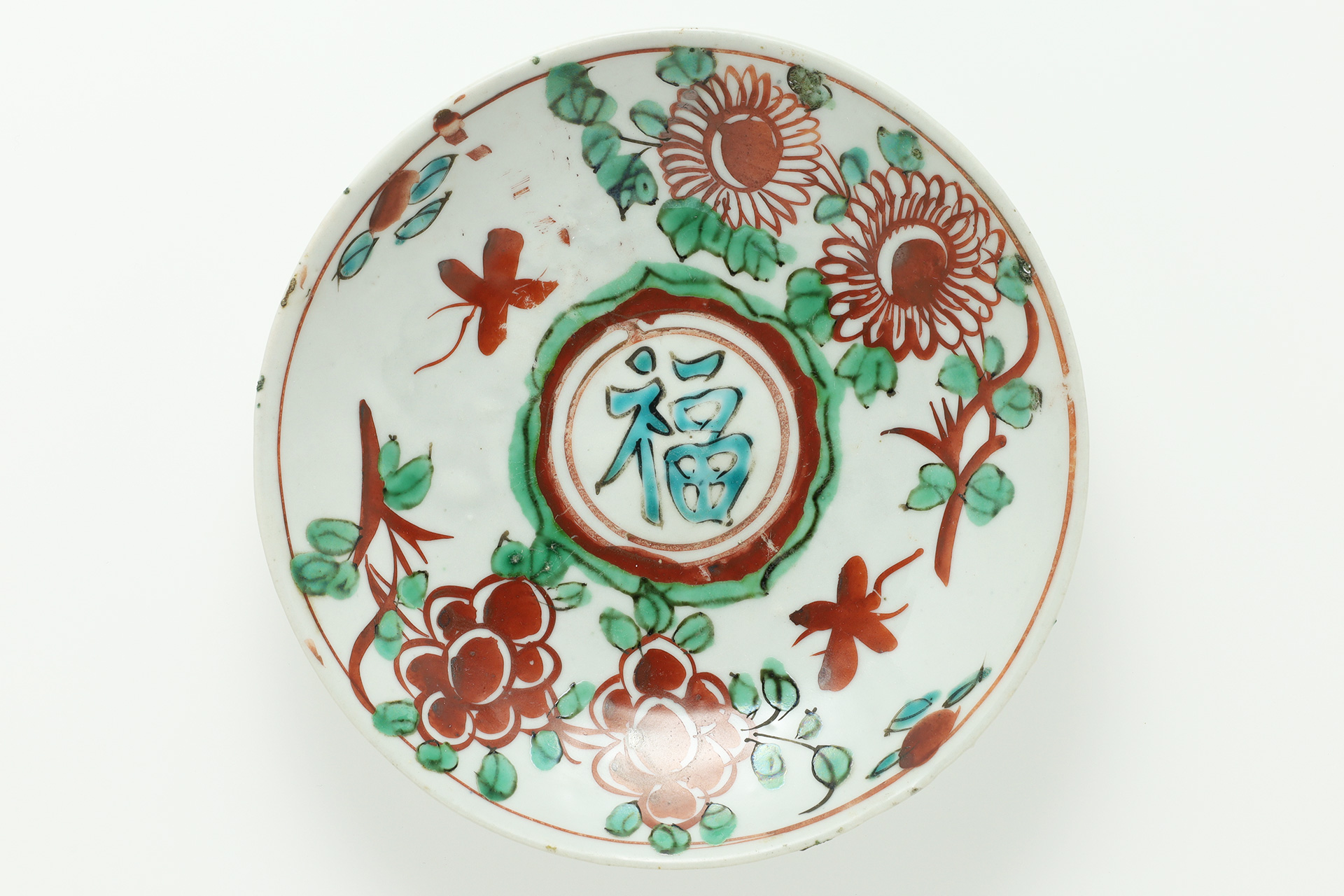
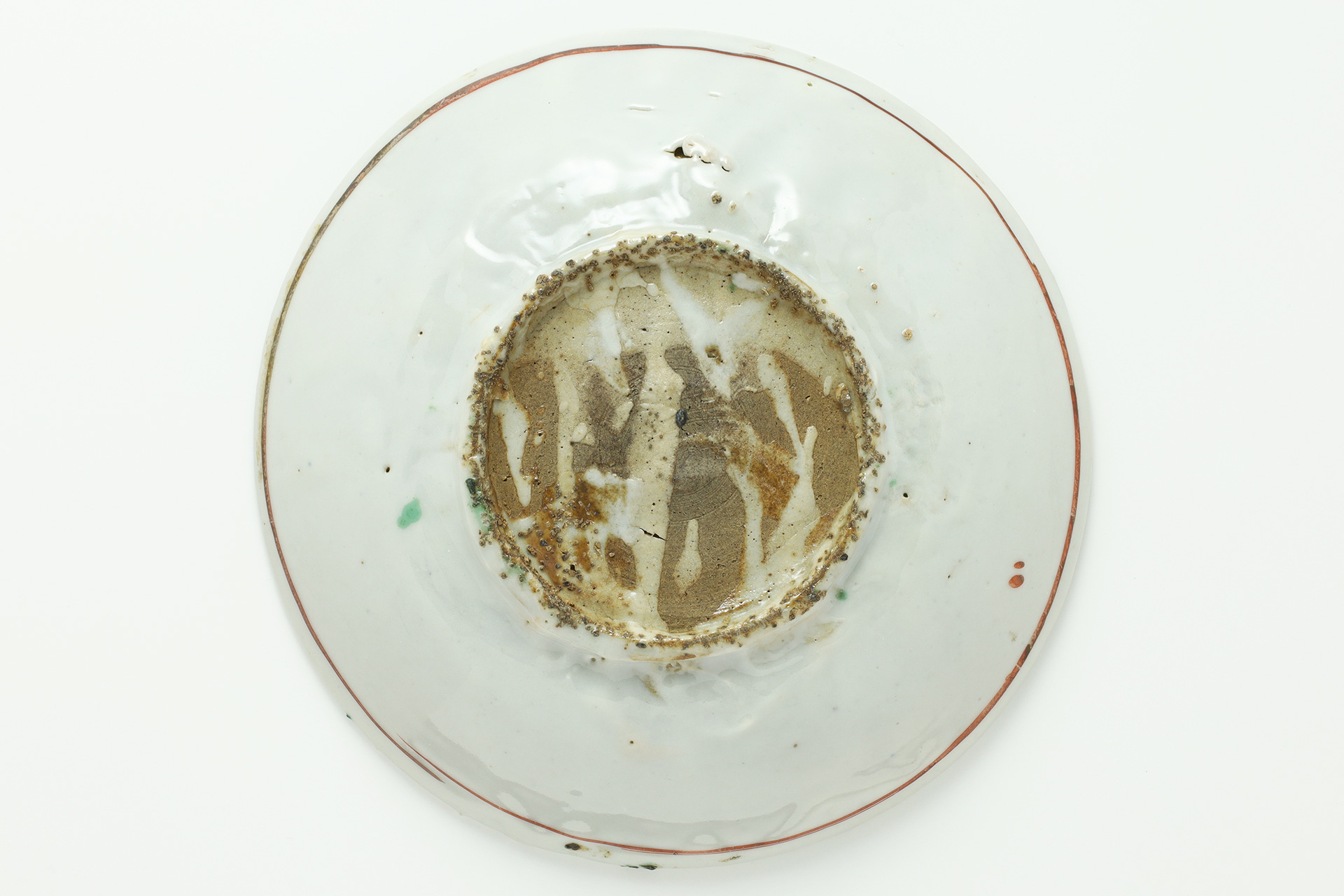
Gosude
Gosude refers to the crude porcelain that were fired at the zhangzhou kiln in china, mainly during the late ming dynasty. Works such as gosu-akae, gosu-sometsuke, and mochihanade are known, and the main trading area was southeast asia and japan. In europe and the united states, it is called “Swatow Ware” after its export port, shantou port in guangdong province. The most likely theory is that during the edo period, southern china was called “Go” so it came to be called “Gosude” meaning pottery from southern china.
We sell and purchase Chinese Antique(Ming・Qing Dynasty)
We have a physical shop in Hakata-ku, Fukuoka City, where we sell and purchase "Chinese Antique(Ming・Qing Dynasty)" works. Drawing on a long career and rich experience in dealing, we promise to provide the finest service in the best interests of our customers. With the main goal of pleasing our customers, we will serve you with the utmost sincerity and responsibility until we close the deal.



